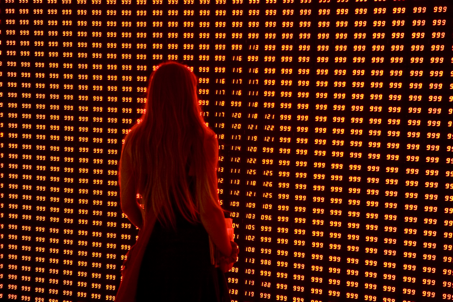08.09.2017
conférence : Reflective Interaction à la School of Creative Media de Hong Kong
Samuel Bianchini qui dirige le groupe Reflective Interaction de l’EnsadLab tiendra une conférence le 11 septembre prochain à la School of Creative Media de la City University of Hong Kong sur la pratique de la “Recherche et Création” pour concevoir des médias à l’origine d’expériences esthétiques, pratiques et critiques (Practice of the “Research and Creation” to design interactive media provoking esthetic, practical and critical expériences).

Crossing Values, installation interactive, Samuel Bianchini, 2008, produite dans le cadre d’un projet de recherche avec Orange Labs and CiTu
Crossing Values, 1ère Biennale D’Art Contemporain de Rennes, Couvent des Jacobins, Rennes, France, 2008. Photographe: © Samuel Bianchini
Plus d’informations :
How to design interactive media to provoke esthetic, practical and critical experiences? Between research and creation, practice and theory, history and innovation, what kind of approach and methodology could we develop? In this specific field of interactive media, how to conceive this kind of “practicable” art, in the light of art history and of the book recently published by the author (Practicable – From Participation To Interaction in Contemporary Art, Bianchini and Verhagen Ed., MIT Press, 2016)?
More generally, how to articulate “Research & Creation”, as an artist and researcher? What is the benefit to be involved in a research approach? How to define a research and a laboratory in art, design and media, such as EnsadLab (Laboratory of the École Nationale Supérieure des Arts Décoratifs, PSL Research University, Paris)? What could be a practice based PhD in art and new media? How to deal between collective approach and individual authorship? Between art and design, what place for the technology? What is a “publication” for a researcher in art, design and creative media?
Some questions for which Samuel Bianchini will try to answer theoretically and practically, through several examples from his own practice and from that of his students-researchers. The author will develop the key-concept of “dispositif” to defend an instrumental approach of the research, an art research by, through and on the medium.